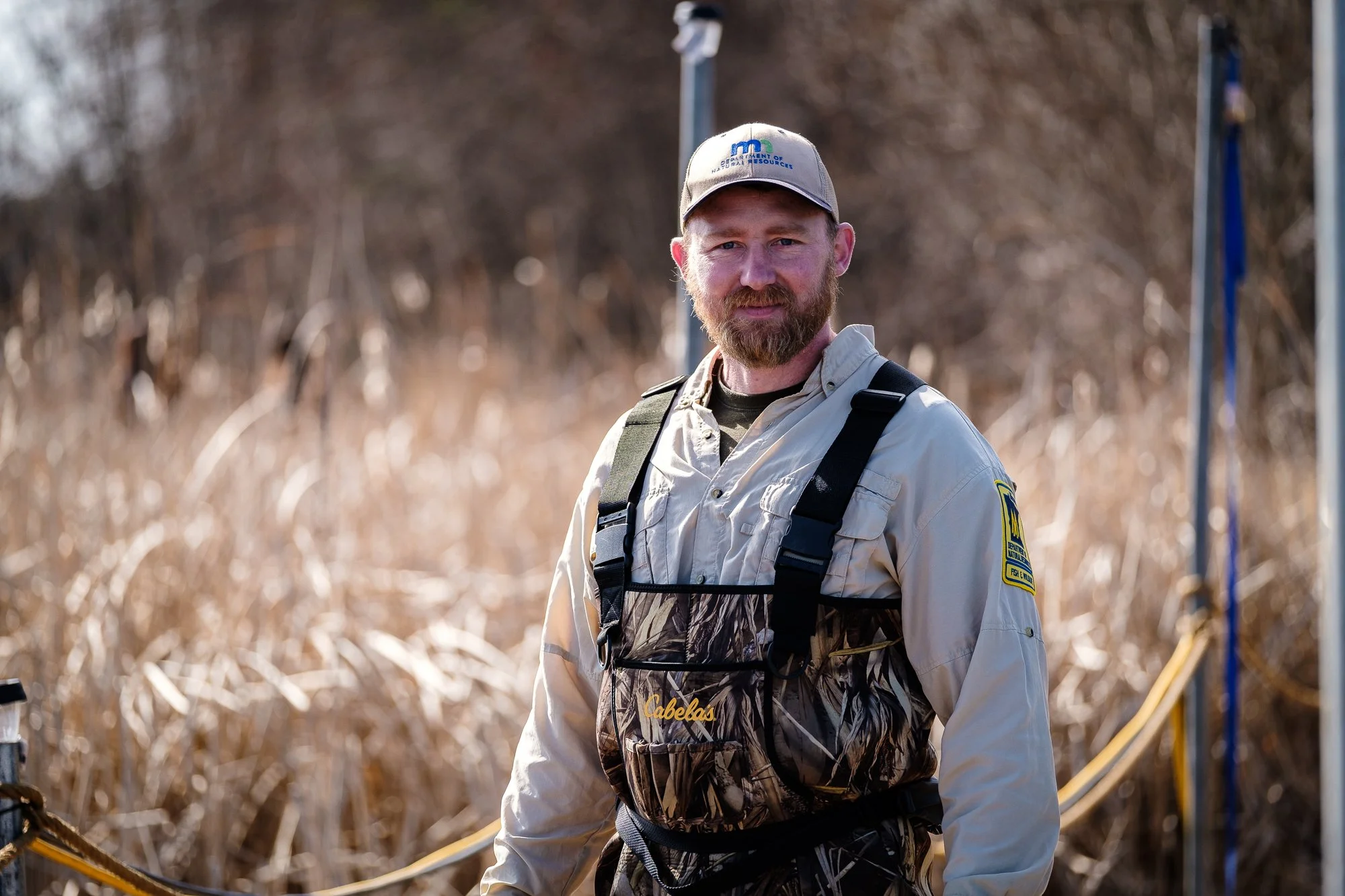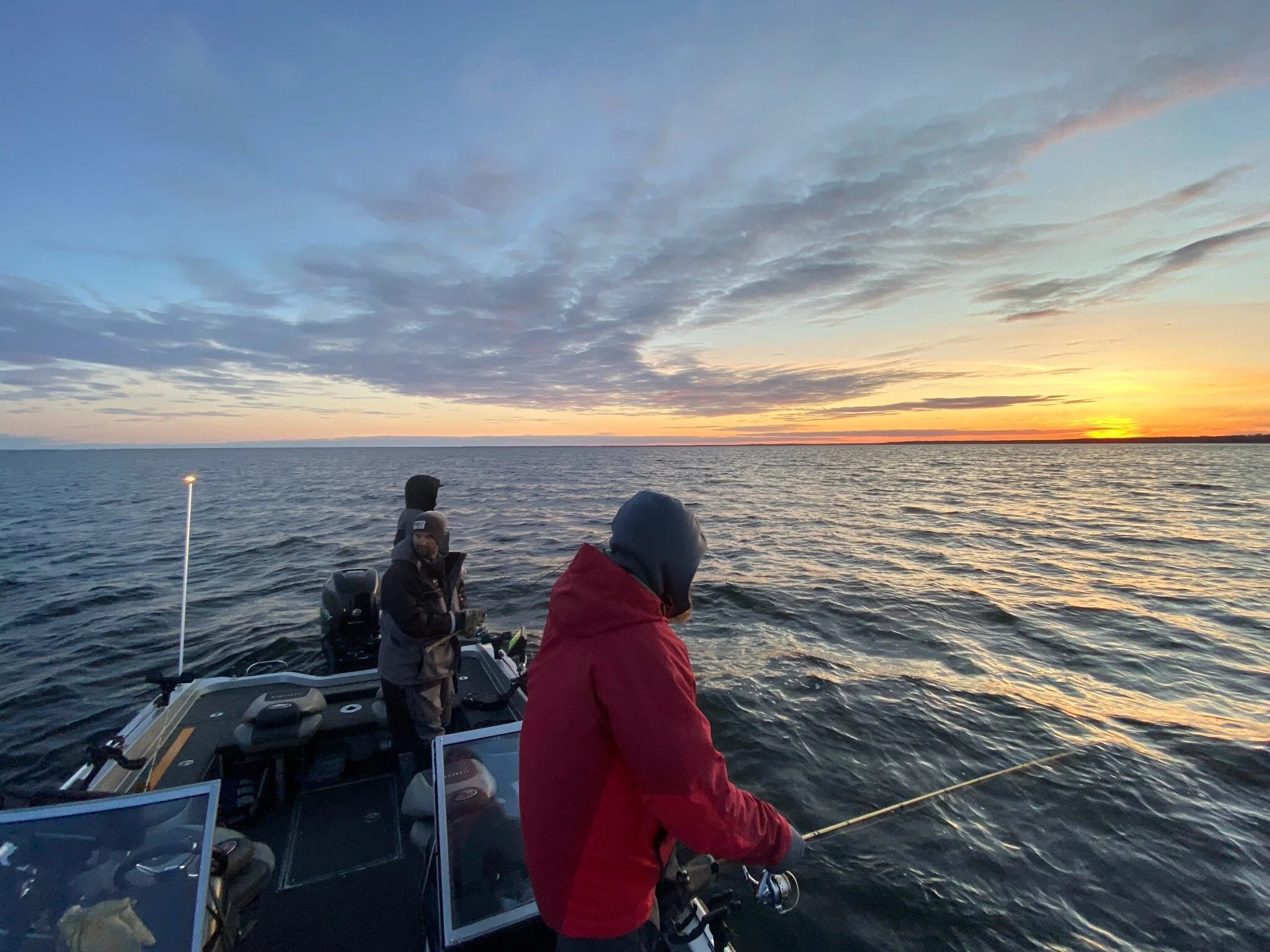Fishing guide Jeff Sundin shares his thoughts and tactics ahead of Minnesota’s fishing opener on May 11th, 2024
Bowen Lodge Winnibigoshish - Cutfoot Sioux Fishing Report May 26, 2021
After a weeklong warm up, a slightly cold, cold front interrupted progress toward early summer walleye patterns on Sunday. Walleyes that had already moved onto deep water structure stayed where they were, but there was not much change in numbers. According to incoming reports, small, scattered packs of larger, mostly female fish were all that could be turned up out there.
Surface water temperatures rebounded nicely afterward, hitting the 65-degree mark on Monday. Walleyes resumed their migration, in fact picked up their pace, we believe. By late in the day, larger schools of smaller male fish started showing up on some of the prominent bars and deep-water points. This is good news, because these migrating fish have been found in water depths of 15 to 22 feet.
Until now, many have relied on the most popular destinations for walleye action, the steep, shoreline breaks adjacent to the Mississippi River Channel. Because those fish have been holding in deeper water, 26 to 32 feet. Catching them with the expectation that they can be released unharmed, is not realistic and certainly not an ideal scenario for nurturing the maturing population of 2018 and 2019-year classes.
Warming water has helped in other ways too, insect hatches have started up and algae blooms are giving the lake a little extra color.
There’s nothing better for starting up a mid-lake “structure bite” than a good bug hatch! Larvae, developing over the lakes soft-bottom flats, attract minnows and small fish. Those baitfish in turn, attract larger predator fish and before you know it, there is an entire food chain set up around the lakes numerous bars and humps.
Focus primarily on fish using the upper edges of the structure. They are both easier to catch and easier to release. Easier to catch because aggressive, feeding fish typically move shallow to do so. Fish that you mark on your electronics in deeper water are more likely to be negative or neutral at best. And if they can be caught, releasing them safely is more difficult than it is to release fish caught in shallower water.
Algae blooms are critical in many ways, not the least of which is that they help darken Lake Winnie’s clear water.
One thing we learned in 2020 was that when the lake’s water darkened thanks to heavy algae blooms, fish behavior changed for the better. As if somebody flipped on a light switch, walleyes moved into “pre-Zebra Mussel”, shallow water haunts that were popular with Bowen Lodge guests 20, 30 and 40 years ago. Fishing shallow water bars, weed patches and the popular 8 to 10 shoreline sand breaks was as good as it ever was.
While the water is still much clearer than it was last summer, we have noticed this week, that certain areas of the lake do show signs of increasing algae blooms. We’re hoping for a nice long stretch of warm weather to help intensify both algae blooms and insect hatches. Which brings us to the last point about both, walleye growth rates.
Winnie is already known for having growth rates that are well above average when compared to other lakes in the region. Algae is food (zooplankton) and the more of it there is in the water, the faster young fish grow. That faster growth rate is what we’re looking forward to more than ever this season. Soon, walleyes from the 2018-year class will begin crossing the 14-to-15-inch mark and that will be a fabulous development for visitors to the lake.
Planning a Memorial Weekend walleye fishing trip to Winnie won’t be difficult because fishing patterns remain simple.
The jig and minnow bite is still very reliable. Set up your 6 to 7 foot, light or medium-light fishing rods with 6 pound test line, 8 pound test at the heaviest. Pack a variety of jigs in the 1-8-to-1–4-ounce range. Shiners are widely available right now and they do work well, so if you like them, then use shiners. But, if you can find large fatheads or rainbows, they will perform equally well for walleyes.
Lindy Rigs are producing fish for folks too, so bringing an array of walking sinkers in the ¼ to ½ ounce size range, along with a few packs of Lindy Rigs, some in the #6 leech and night crawler size, some in the #4 or #2 minnow size will get you started.
Leeches and night crawlers have begun working on mid-lake structure but using larger than average minnows is still by far the best Lindy Rigging bait. This is especially true whenever the bite is “off”, negative, and neutral can watch your fast-moving jig and minnow slip by without flinching. But these fish have a much harder time snubbing a lively minnow moving s-l-o-w-l-y past their noses. So, if you’re at the bait shop and spot large shiners or rainbows, pick up a few, they might come in handy.
Perch are where you find them right now, most of them are being caught as a byproduct of walleye fishing. We have noticed that many of the larger perch are caught in areas where insect hatches are occurring. The relationship between perch and bloodworms is well-known. So, if you’re on the lake and experience a midge hatch, bugs that look like mosquitoes but don’t bite, you’re in the right neighborhood. Midge, is the adult version of the bloodworm and marl, a semi-soft clay-sand mix is where you’ll find them. This combination could be found in virtually any water depth.
Crappies are currently on either side of their spawning run right now. Some of them have already moved into shallow water, finished spawning, and have left the shallows, while others are still fanning beds. Shallow fish might be tricky to find this weekend, but some folks probably will. For Bowen Lodge guests though, staying right here in Cutfoot will probably be the best idea. The late evening bite should be reliable, fish the weed edges in 6 to 10 feet of water using slip floats, small jigs and crappie minnows. The fish move about an hour before sunset and the action could last for 45 minutes, give or take.
Northern pike are hitting, but they too are being caught by folks while they pursue walleye. But, if you were in the market for a larger pike, try rigging a large sucker minnow below a slip float. Position along cabbage patches, rock piles or neat the steep breaklines on shoreline related, main-lake bars like the Bena Bar, Horseshoe or Center Bars. Larger pike are loners right now but can be caught by anyone who’s persistent enough to look for them.
We’re looking forward to a classic Memorial Day Weekend with weather patterns all over the map but appear to be generally cool. Anything from cool, breezy, and grey, to sunny, but crisp. So, bring your rain suits, warm jackets and waterproof shoes.
Again, we love eating fish and we want you to enjoy a family fish fry whenever you can. But we also think it’s good not to go overboard on the 2018-year class of walleye. So, let us give you one more, “conservative minded” sales pitch about the class of 2018 walleyes.
We suggest helping them in their journey to adulthood by setting your own, voluntary size and bag limits and then sticking to them. Keep a few for a meal, release a few to provide seed for another season as we prepare for what will be an amazing few years of fishing on the big lake!
Cheers and happy fishing, we will be seeing you on the lake! And don’t forget, if you’re in the neighborhood, stop in and say hi, we’d love to chat and give you a tour!
What's Biting On Winnie? Everything! Bowen Lodge Fishing Report August 23, 2020
A familiar fall scene on Cutfoot Sioux, crappies, and they are beginning to turn up in the mix of fish our guests are catching. These fish were caught on Saturday August 22nd by Keith Eden (L) and Kenny Shipler (R) using Little Joe Spinners tipped with fatheads.
Nomadic in nature, crappies travel between summer and fall haunts as the lake transitions from the warm water period, into the cool water season.
For a time, crappie locations vary with both the weather and time of day. During early morning and late evening, some of them are sneaking out of vegetation and showing up along steep breaklines in water depths of 18 to 24 feet. Inside turns, adjacent to weedy flats and close the shoreline are key early season locations.
It is cool weather that helps accelerate the movement out of shallow weeds, but when conditions warm and the sun shines, many crappies will retreat back into heavy cover. Cabbage, Coontail and Wild Celery are the 3 most common locations to find them. For the moment, Cabbage appears to be the most preferred cover; that’s where the fish you see here were caught.
Presentation depends on both angler preference and level of skill. Trolling spinners tipped with fatheads is often the easiest way for folks to catch crappies in the cabbage, but not necessarily the most efficient. For peak efficiency, skilled anglers casting small jigs tipped with plastic tails are likely to do better. Creep along the weedline, casting into pockets and gaps in the vegetation using a drop-swim-drop retrieve.
Walleyes and the development of Winnie’s 2018 year class have been on the minds of anglers for a while. Now, many of those 2018 fish are reaching maturity and some of them are also reaching the fish cleaning station.
“They’re not big, but they are plentiful and folks have been anxious to get after them; almost everyone is catching fish each day. If you were to voluntarily set your sights on a 14 inch minimum size, you will catch enough “keepers” for the dinner table and have plenty of action too.” So say’s Reed Ylitalo, one of our preferred fishing guides on both Winnie and Cutfoot.
“Most folks are trolling spinners and they might be catching larger numbers of fish than me. But I’ve been fishing with jigs, tipped with decent size minnows and on average; I think it has helped my customers’ a little bit larger size fish. I’m using a 1/8 ounce Lindy Live bait Jig tipped with shiners when I can get them. Larger fatheads or rainbows will also work in a pinch.” Ylitalo added.
Walleye locations are all over the map this year, aided in part by the lake’s heavier than average algae bloom. With diminished water clarity, walleyes will move into shallow water on breezy days or during prime time feeding periods early and late in the day. It has not been unusual to catch fish in 6 to 8 feet of water; folks who have been coming here for a long time are reminded of how walleye fishing was during the “good old days”, the pre-Zebra Mussel times.
Don’t expect fish to bite all day long in the shallows though, especially not on bright, calm days. During mid-day, it’s been easier to find and catch fish in deeper water. Some of the lakes larger bars are holding fish and fishing the breaklines in 18 to 26 feet can be productive during the day.
Some of the shoreline points that lead into deep water are productive too. Fish that move shallow to feed in the morning, move deeper during the daytime. A good example would be fish that inhabit the area near Stony Point. It’s been common to for fish to migrate back and forth between shallow and deeper water; sometimes several times a day.
The lakes flats have been productive at times too; gravel and rock patches will hold fish periodically. There was an article about fishing the flats last week that contained some good tips. If you’re interested, you might want to check it out using this link to Jeff Sundin Lake Winnie Report August 19, 2020
The changeable locations will keep anglers on their toes; but anyone who keeps searching is going to be rewarded with some decent action.
Adding to the action are both perch and pike, they have been available in good numbers. The average sizes have been respectable too; anglers could set their sights on perch over 10 inches and easily be able to gather plenty for a meal.
Pike in Winnie appear to be helped by the “Northern Zone” 22 to 26 protected slot limit. This season, it has been much easier to find and catch fish that have crossed over the 26 inch mark. We haven’t seen many fish over 30 inches yet, but there have been lots of 26 to 27 inch fish.
Most of our guests are catching pike while they pursue walleyes. Whether they’re trolling spinners or using jigs and minnows, the pike just come along occasionally. Trolling crankbaits on the flats, especially the large flats on both Center and Bena Bars will produce good numbers of pike too. And if you’re into live bait rigging, A Lindy Rig tipped with large creek chubs or sucker minnows will produce fish too. The steep breaklines on all of the lakes larger mid-lake bars are good locations for rigging pike.
With fall just around the corner, it appears that our guests are in for a treat. Proven populations of walleye, pike and perch should keep most folks busy. The jury is still out about how good the panfish action will be, but there are early indications that there will be good news on that front too. All in all, it looks like we have a great fall headed our way!












